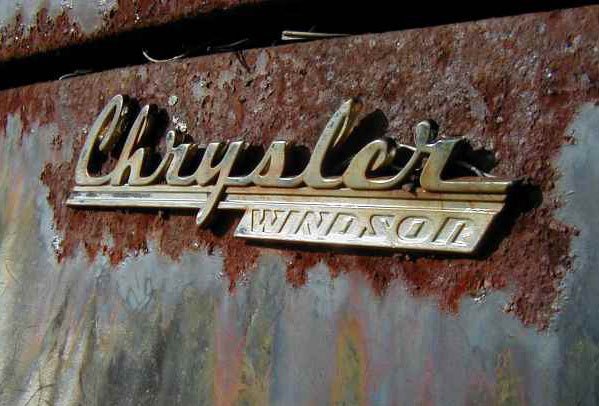Not All U.S. Factory Closures Are Made In Japan

All told, it takes about 3 weeks for a shipborne container from Japan to reach its destination at the West Coast. To the East Coast, it’s about 5 weeks. With the Japanese earthquake and tsunami three weeks old, we should see the first real stateside disruptions by now. And we do. But not all originate in Japan.
Ford will stop production at plants in Flat Rock and in Kentucky next week. Nissan “will adjust its production schedule,” says the Freep, “mostly because of the impact of the earthquake in Japan three weeks ago.”
At Ford’s pickup plant in Kentucky, the “undisclosed parts shortages” come at the right moment. “Demand for pickup sales has declined,” the Freep writes.
Ford halts Flat Rock not because it doesn’t have enough parts. It has way too many Mustangs. Its supply is good for 116 days.
Nissan will stop production at factories in Tennessee, Mississippi and Mexico from a few days to a week because supply of parts from Japan is getting low.
Chrysler’s Windsor, Ontario, plant will shut now next week. “The latest shutdown is caused by a shortage of 3.6-litre Pentastar engines as well as plastic components, which house fuses,” writes the Windsor Star. Oddly, “the engines are assembled in Trenton, Mich., while the plastic fuse boxes are built in Mexico.”
Meanwhile in Japan, the “auto industry faces a vexing chicken-or-egg question. Are carmakers not producing cars because they can’t get parts? Or are parts makers not supplying parts because they’re getting no orders?” Automotive News’ Asian Editor Hans Greimel found no definitive answer. “Most Tier 1 suppliers here say they are ready to go — if only their automaking customers would fire up their factories and start placing orders again. But automakers say plants are down because the parts are, too.”

Bertel Schmitt comes back to journalism after taking a 35 year break in advertising and marketing. He ran and owned advertising agencies in Duesseldorf, Germany, and New York City. Volkswagen A.G. was Bertel's most important corporate account. Schmitt's advertising and marketing career touched many corners of the industry with a special focus on automotive products and services. Since 2004, he lives in Japan and China with his wife <a href="http://www.tomokoandbertel.com"> Tomoko </a>. Bertel Schmitt is a founding board member of the <a href="http://www.offshoresuperseries.com"> Offshore Super Series </a>, an American offshore powerboat racing organization. He is co-owner of the racing team Typhoon.
More by Bertel Schmitt
Latest Car Reviews
Read moreLatest Product Reviews
Read moreRecent Comments
- ToolGuy First picture: I realize that opinions vary on the height of modern trucks, but that entry door on the building is 80 inches tall and hits just below the headlights. Does anyone really believe this is reasonable?Second picture: I do not believe that is a good parking spot to be able to access the bed storage. More specifically, how do you plan to unload topsoil with the truck parked like that? Maybe you kids are taller than me.
- ToolGuy The other day I attempted to check the engine oil in one of my old embarrassing vehicles and I guess the red shop towel I used wasn't genuine Snap-on (lots of counterfeits floating around) plus my driveway isn't completely level and long story short, the engine seized 3 minutes later.No more used cars for me, and nothing but dealer service from here on in (the journalists were right).
- Doughboy Wow, Merc knocks it out of the park with their naming convention… again. /s
- Doughboy I’ve seen car bras before, but never car beards. ZZ Top would be proud.
- Bkojote Allright, actual person who knows trucks here, the article gets it a bit wrong.First off, the Maverick is not at all comparable to a Tacoma just because they're both Hybrids. Or lemme be blunt, the butch-est non-hybrid Maverick Tremor is suitable for 2/10 difficulty trails, a Trailhunter is for about 5/10 or maybe 6/10, just about the upper end of any stock vehicle you're buying from the factory. Aside from a Sasquatch Bronco or Rubicon Jeep Wrangler you're looking at something you're towing back if you want more capability (or perhaps something you /wish/ you were towing back.)Now, where the real world difference should play out is on the trail, where a lot of low speed crawling usually saps efficiency, especially when loaded to the gills. Real world MPG from a 4Runner is about 12-13mpg, So if this loaded-with-overlander-catalog Trailhunter is still pulling in the 20's - or even 18-19, that's a massive improvement.


































Comments
Join the conversation
"“Most Tier 1 suppliers here say they are ready to go — if only their automaking customers would fire up their factories and start placing orders again. But automakers say plants are down because the parts are, too.”
This isn't necessarily inconsistent. In order to build a car, the assembler must have all of the parts, not most of the parts. The vast majority of suppliers might indeed be fired up and ready to go, but only one part has to be on the unobtanium list for the all stop order to go out.